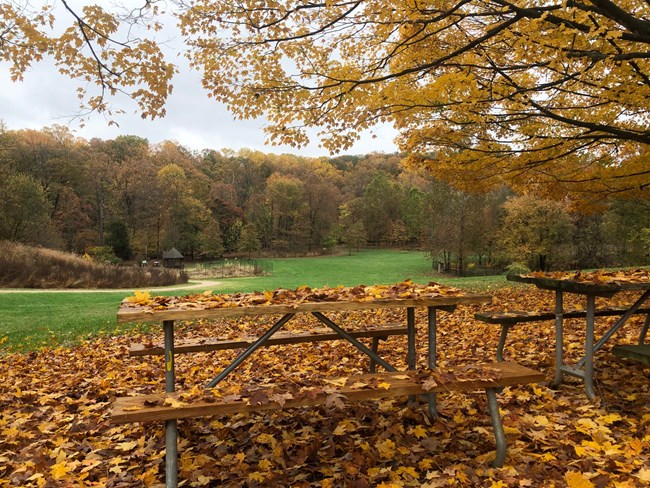
NPS Photo When the park was conceived in the 1960's, the area was changing from outer suburbs and working farms to an intensely developed suburban housing and business center. The first large shopping mall in northern Virginia was built only a few miles east of the park at Tyson's Corner in 1970, and that area has since become a major employment center. The Dulles Toal Road, (VA Route 267) now twelve lanes strong, walls off the park to the south and west, while the land to the north and east has now been filled in with suburban housing and larger structures such as churches, parking garages, and schools. Since its establishment, the mix of plants and animals at Wolf Trap has changed markedly as a result of both the changes in the park and in the surrounding area. Today, about 65 acres of the park are managed as natural areas. Wolf Trap National Park for the Performing Arts is located in the northern Virginia piedmont, characterized by rolling hills, a mild climate, and year-round rainfall. The natural area is largely forested, with some upland forest on the hillsides, and some forested wetland. Large grassy areas, used for parking during the performance season and carefully managed as turf, do provide some open space habitat for species such as bluebirds. A permanent stream, Wolf Trap Creek, winds through the park, joined by a small tributary, Old Courthouse Branch. Remnants of the former farm landscape include a shallow farm pond built in the 1930's, now surrounded by forest. Small areas of farm fields and pasture that are not being maintained as turf grass are now well along in the natural process of being overgrown with trees and shrubs. |
Last updated: January 2, 2020
